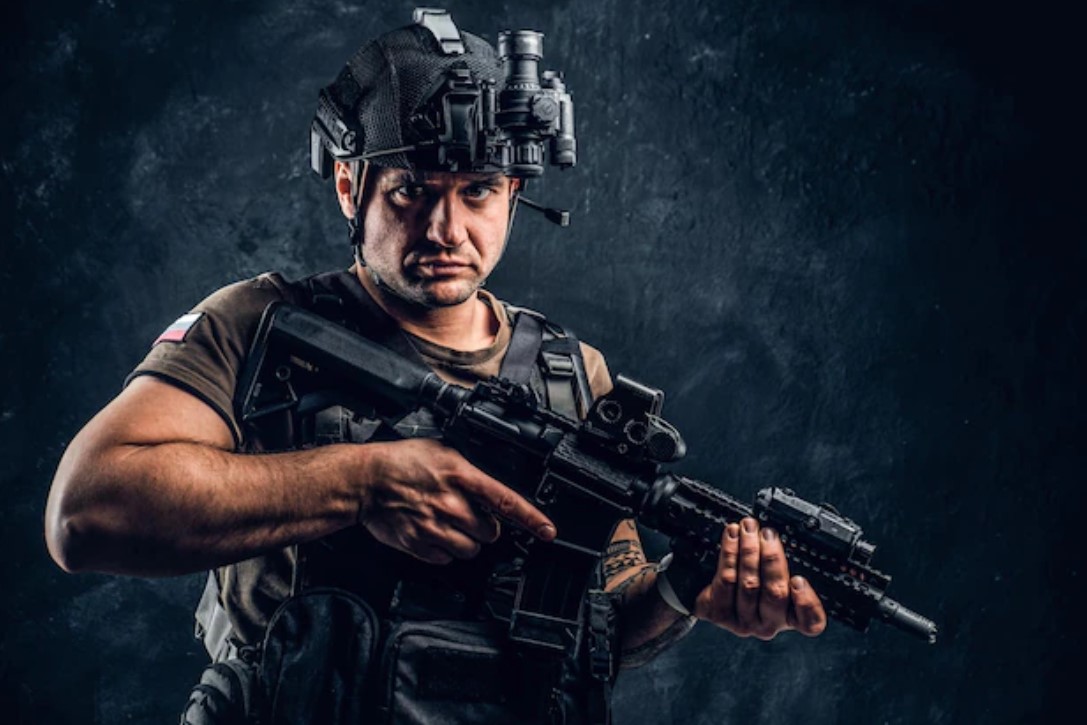Body armor has been a standard issue for armies since the dawn of organized conflict. Armor dates back to the third millennium B.C., whereas offensive weapons have been dated to the 8th millennium B.C, suggesting a similar timeline for their development.
Even though the development process was almost purely empirical, the enormous information accumulated over hundreds of years led to various highly powerful armor systems.
Protection systems against bullets, shell fragments, and knives have been developed using this and other recent innovations, such as elevated synthetic materials.
Because of these advancements, body armor is now a standard issue item for military and police forces.
In this blog post, we are going to find out about how we are going to explore some segments of the police outer vest:
What Is Police Body Armor?
Officers often use body armor as a form of personal protection.
Every year, hundreds of police officers report being assaulted. Body armor prevents serious injury and even death for many people. Police officers benefit from body armor not only in the event of an attack but also in an automobile accident.
Most police headgear and body armor are made with handgun protection in mind. Despite police helmets’ lower market share compared to body armor, the specifications for helmets need them to be capable of withstanding bullets at similar velocities.
In addition, officers can protect themselves from rifle fire with the restricted quantity of body armor that includes breastplates.
Features of Police Body Armor
Police Body Armor encourages the use of personal body armor by documenting the armor’s effectiveness in reducing mortality and disability.
It recognizes individuals who have survived a life-threatening situation as a result of wearing personal body armor.
It also serves the law enforcement community by gathering and disseminating critical information about these survivor incidents.
Soft Body Armour For Police Officers
The two types of body armor used in current times are hard body armor and soft body armor. Plates made of metal or ceramic can be utilized to build sturdy body armor.
Layers of fabric constructed from high-performance fibers make up most soft body armor. These layers are typically layered in a sandwich-like fashion.
To provide sufficient ballistic protection, soft body armor is typically worn by soldiers on the field in combination with hard body armor.
It is also commonly worn by law enforcement authorities, who are more likely to come into contact with lower levels of ballistic danger.
How Is The Police Body Armour Made?
Officers in the Police Service come from all walks of life and perform a wide range of duties.
There are different obligations associated with each option. For example, many law enforcement professionals could not do their jobs without using stabbing-resistant vests.
This is not due to their popularity but rather to the fact that they are the most accessible weapon.
One of the components of a protective vest is a panel. It’s a vest-shaped sheet of advanced polymeric polymers like Kevlar, Spectra Shield, Twaron (comparable to Kevlar), or Dyneema (in other countries).
Nonwoven Spectrum Shield is coated & bonded using Kraton resins, while the woven Kevlar layers are carefully stitched together to use Kevlar thread.
Here, the panel provides adequate security but little in the way of comfort.
A fabric casing protects it; common materials include polyester, cotton blends, and nylon. A strip of absorbent material, like Kumax, sewn to the shell’s body-facing side improves comfort.
The Nylon padding can be added to an existing bulletproof vest. Bulletproof vests are not only meant to protect their wearers from bullets but also offer several pockets for storage.
Material Requirements For Police Body Armour
Ballistic threats include fragments from artillery shells, bomb blasts, and bullets from handguns and rifles. Depending on their intended function, bullets can be made from various materials and take several distinct forms.
Pure lead bullets with spherical heads are very flexible, but they also have poor penetration. This maximizes damage to the human torso.
The metal-coated and ovoid-headed ones showed less distortion after being hit. Less damage to tissues was done by blunt force as a result.
Fragment deformation and penetration are very sensitive to fragment shape and impact velocity, which are hard to predict.
Hardened steel is typically used for penetrators so that they don’t bend during the stress of a ballistic shooting test. The test can be tailored to your specifications by adjusting the impact velocity.
Recognizing the dangers posed by bullets is crucial for designing body armor that is both effective and easy to wear. Therefore, when creating police body armor, there are a few criteria that must be met:
- The primary requirement is that the materials be robust enough to shield the wearer from sufficient incoming ballistic energy.
- Two, the materials must be light and thin, not restricting the wearer’s movement and hampering their performance.
- Third, the materials utilized must be durable so that the effectiveness of the body armor does not degrade when exposed to wetness or ultraviolet light.
- Extreme flexibility in the materials is essential for providing sufficient comfort.
That’s all the relevant information that you need to know about the Police Outer Vest. It has a complicated structure that differs from the grades of police officers. Want to keep reading interesting topics about the world? Read our blog to find out more.
